The term “tube forming machinery” refers to any and all equipment that contributes to tube forming. In this case, tube forming does not refer to the formation of tubing, which is called tube fabrication, but rather the process of altering tubing into complex shapes. Note that a tube is a thin, hollow shape used as a passage to convey gas or fluid or as structural components. A tube is typically cylindrical but can be rectangular or square. Also, though they are technically different, in general, you can use the terms tube or pipe interchangeably. Read More…
For 80 years Burr OAK Tool Inc. has delivered machines, tools, and expertise to the world's heat exchange manufacturers and tube processing industries. Burr OAK Tool Inc. designs and produces high quality fin dies, fin lines, tube expanders, tube cutoff machines, tube bending equipment, and coil forming units for companies in more than 75 countries.
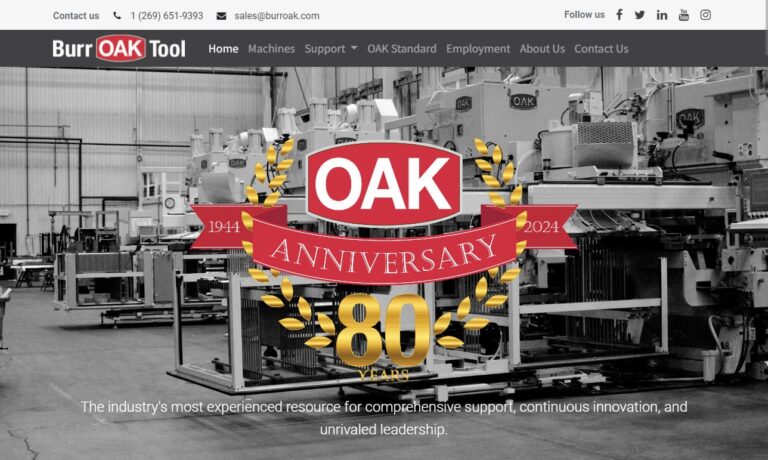
For over 50 years, Haven Manufacturing Corporation has built a solid reputation as the productivity leader in the tube recutting industry. As our business continues to grow, we have kept the focus on providing new cost-effective machinery and total solutions that increase output without adding additional labor resources. You can trust Haven to provide fully integrated solutions to meet all of...
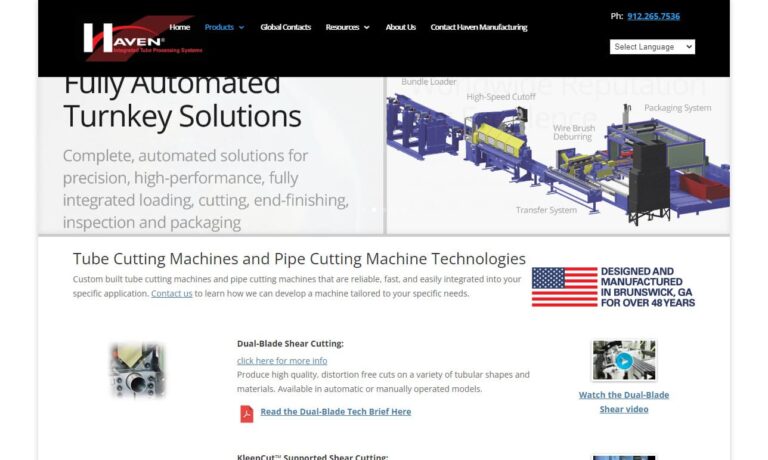
Universal Tube & Rollform Equipment Corp is your trusted ally in the realm of tube forming machines. Partner with us to experience a seamless integration of quality products, personalized services, and cutting-edge capabilities that redefine excellence in manufacturing solutions. Together, we can elevate your projects to new heights, ensuring that your tube forming components are not just parts...

More Tube Forming Machinery Manufacturers
History of Tube Forming Machinery
Humans have been crafting, shaping, and forming tubing for millennia to serve a wide range of structural, transport, and industrial applications. Some of the earliest pipes, dating back to around 2000 B.C. in China, were handmade from reeds and used for conveying water. The Romans were also renowned for their advanced aqueduct systems, which transported water throughout Rome and its vast empire using pipes and early forms of tubing.
One of the earliest mechanical tube fabrication machines was created by James Russell in 1824, responding to the growing demand for pipes to fuel London’s coal-burning lamps. He invented a pioneering method using a rolling mill. Russell would heat a flat iron strip until it was malleable, fold and weld it with a drop hammer, and then pass it through a groove and rolling mill. However, in 1825, Comenius Whitehouse developed a process called butt-welding, which rendered Russell’s method obsolete and laid the foundation for modern pipe-making. This process involved heating thin sheets of iron and drawing them through a cone-shaped outlet, which shaped the edges into a tube. The pipe was completed by welding the ends together. The first American plant to use Whitehouse’s process opened in Philadelphia in 1832, marking a milestone in industrial pipe manufacturing in the United States.
In the 1840s, metalworkers began creating seamless tubes by drilling into solid circular billets, heating them, and drawing them through dies to form pipes. This method, however, produced uneven wall thicknesses and was difficult to drill. To address this challenge and produce higher-quality tubing, in 1888, a manufacturer developed a technique where a hollow tube was created by casting a solid billet around a fireproof brick core, providing more uniformity and structural reliability.
By the late 1800s and early 1900s, the manufacturing of automotive parts such as oil and gas lines, as well as bicycle components, led to the opening of the first seamless tube manufacturing plant in 1895. The demand for precision tube fabrication grew with the expansion of the automotive and industrial sectors. The next major innovation in tube fabrication came in the early 1900s with the development of a process for hot forming tube elbows using elbow benders, allowing for quicker and larger-scale production. In 1911, John Moon built machinery for continuous tube forming, ushering in the modern era of tube mill production and high-speed fabrication.
The 1960s saw the invention of the high-frequency induction bending machine, enabling more precise results, tighter tolerances, and the ability to process a broader range of metals and alloys. This was followed by the development of Computer Numerical Controlled (CNC) technology, which revolutionized the industry by allowing manufacturers to design on a computer and have the machine execute the design with unmatched accuracy. CNC machining has greatly increased the speed, ease, and complexity of tube fabrication, allowing for more intricate designs, tighter bends, thinner walls, and higher production volumes across various industries such as automotive, aerospace, construction, and manufacturing.
Following CNC technology, engineers developed other computer-assisted tools, such as CAD (computer-aided design) software, which further enhanced the design and prototyping process. These innovations have made tube forming machinery more efficient and have contributed to the growth of tubing companies like Universal Tube and others. As technology continues to advance—incorporating robotics, machine vision, and IoT connectivity—we can expect even more precise, automated, and innovative tube-forming machinery in the future, supporting new applications in renewable energy, medical devices, and advanced manufacturing.
How Tube Forming Machinery Works
Modern tube forming machinery is engineered for efficiency, consistency, and high-precision manufacturing of tubes and pipes for a diverse range of applications. Common forming services encompass cutting, bending, and joining, but advanced tube forming equipment is capable of much more. Additional processes executed by tube forming machinery include:
- Packing
- Tube flaring
- Threading
- Coining
- Nitinol heat setting
Understanding these processes is essential when selecting the right tube forming equipment for your manufacturing needs. Below, we explore each process in detail:
Packing
Packing is a specialized tube bending process where a tube is filled with supportive material to aid in its formation and prevent deformation. Common packing methods include ice packing and sand-packing/hot-slab forming, each suitable for different material types and desired bend radii.
Ice Packing: This straightforward method involves filling a tube with a water solution, freezing it, and then bending it. The solution has properties that make the ice flexible. This technique is often used to make trombones and other musical instruments, as well as delicate or thin-walled tubing where internal support is necessary to avoid collapse during bending.
Sand-Packing/Hot-Slab Forming: This industrial process begins with filling a tube with fine sand, capping both ends, and heating it in a furnace to at least 1600℉. Once heated, the tube is bent around pins on a slab using mechanical force, such as a crane or a winch. After cooling, the sand is removed, which helps minimize distortion in the tube’s cross-section. Sand-packing is frequently used for heavy-duty steel and alloy tubes in power generation, oil and gas, and structural applications.
Tube Flaring
Tube flaring aims to form the end of a tube into a funnel shape, or tube flare. This simple yet crucial process is carried out using tube end forming machines. Tube flaring is commonly used in plumbing, HVAC, automotive brake lines, and hydraulic system components, where tight, leak-proof connections are essential. Flaring also preps tubes for fittings, connectors, and assembly in high-pressure environments.
Tube Threading
Tube threading involves creating raised helical ribs, or threads, on the end of a tube. This can be achieved internally or externally, with both types designed to connect to each other, allowing separate pieces of tubing to be joined or connected to valves and fittings. Threading is critical for industries such as oil and gas, petrochemical, construction, and plumbing, where secure, pressure-resistant joints are required.
Coining
In tube forming, coining refers to flattening or shaping the tubing using high-pressure dies and power presses. This process creates precise forms, grooves, or markings on the tube surface, enhancing the tube’s fit and function in assemblies. Coining is widely used in automotive, aerospace, and appliance manufacturing for creating high-integrity connections and mounting points.
Nitinol Heat Setting
Nitinol heat setting is a specialized process applied exclusively to nickel-titanium alloys, known as shape-memory alloys (SMAs). Nitinol consists of nearly equal parts nickel and titanium, and its unique properties allow it to return to a preset shape when exposed to heat. During nitinol heat setting, the tubing is forced through a precision die and baked at high temperatures, repeating the heating cycle several times until the desired shape is permanently set. Nitinol tubes are increasingly used in medical devices (such as stents and guide wires), robotics, and aerospace applications where flexibility, resilience, and biocompatibility are required.
Types of Tube Forming Machinery
As a general rule, tube forming machinery must maintain high accuracy and repeatability. Therefore, these machines are typically either advanced automated manufacturing cells or dedicated machines, depending on the requirements of the production environment.
Automated manufacturing cells can be programmed for a variety of applications and are often integrated with material handling systems, robotics, and quality control sensors to maximize throughput and minimize labor costs. These systems are ideal for medium- to high-volume production runs and support flexible manufacturing strategies.
Dedicated machines are designed for specific tasks and cannot accommodate design changes. They provide unmatched precision and efficiency for highly specialized tube forming operations, such as custom automotive exhaust fabrication or aerospace hydraulic lines.
There are many types of machinery within the categories of automated manufacturing cells and dedicated tube forming machines. In general, tube forming machinery is highly diverse and includes the following equipment types:
- Tube cutting machines
- Tube end forming machines
- Bending machines (tube benders / tube bending equipment)
- Roll benders
- Pipe benders (including exhaust pipe benders)
- Tube notchers
- Tube rolling machinery
- Tube mill equipment / tube mills
- Tube swaging machines
- Hydroforming machines
Tube cutting machines are essential for cutting tubing to various lengths and shaping the ends. They are highly precise, creating burr-free circular and square ends. Advanced models include programmable logic controls (PLCs), servo-driven feeds, and automatic material handling, ensuring consistent part quality and high productivity for industries such as automotive, construction, and furniture manufacturing.
Tube end forming machines also perform cutting tasks, but they are specifically designed to shape the tube end. They can perform chamfering, end expansion, roll beading, end reduction, flanging, flaring, and notching. These machines are critical for fabricating parts that require complex end geometries or tight-fitting connections, such as HVAC components, exhaust systems, and hydraulic assemblies.
Bending machines, also known as tube benders or tube bending equipment, curve and twist tubes according to precise specifications. This category includes various types, such as:
- Roll benders: Change the bend radius of a tube by passing it through a series of pressure-applying rollers. Ideal for producing large-radius bends in structural steel, aluminum, and stainless steel tubing for construction, shipbuilding, and architectural applications.
- Rotary draw benders: Use a rotating die to produce tight, consistent bends with minimal deformation. Popular in automotive, aerospace, and furniture manufacturing for forming complex, multi-bend components.
- Mandrel tube benders: Incorporate an internal mandrel to support the tube during bending, preventing wrinkling and maintaining interior diameter. Essential for high-precision applications such as hydraulic lines, medical instruments, and exhaust systems.
Pipe benders perform similar functions on pipes and are often called exhaust pipe benders when used in automotive exhaust fabrication. These machines are crucial for producing high-performance exhaust systems, fluid transfer lines, and structural supports.
Tube notchers create notches in tubes by cutting vertically and perpendicularly into the tubing’s surface, preparing them for welding, assembly, or insertion into other components. Tube notching is widely used in race car chassis fabrication, handrails, and custom metalwork.
Tube rolling machinery, a type of roll forming equipment, rolls metal strips into various tube diameters by gradually shaping flat stock into a round form. This process is commonly used in producing steel and aluminum tubing for fencing, scaffolding, and industrial frameworks.
Tube mill equipment, or tube mills, is almost identical to tube rolling machinery but is typically used for high-volume, continuous production. Tube mills produce tubing or piping by continuously rolling a metal strip until the edges meet and are welded, creating a seamless, high-strength product.
Tube swaging machines, or swaging machines, are cold metalworking machines that use high pressure or a die to permanently join multiple tubes, reduce diameters, or create stepped features. Swaging is prominent in the aerospace, defense, and high-pressure fluid transfer industries.
Hydroforming machines shape tubes using fluid pressure, forcing the tube material into a forming die and causing extreme shape deformation. Hydroforming technology creates strong, lightweight parts with uniform thickness, making it ideal for automotive chassis components, bicycle frames, and aerospace structures.
Design and Customization of Tube Forming Machinery
When designing tube forming machinery or investing in a tube forming solution, manufacturers and buyers must consider a variety of critical application factors to ensure optimal performance, efficiency, and ROI. Common design considerations include:
- Complexity of tube shapes: Required cuts, bends, flaring, threading, or custom geometries.
- Dimensions: Length and wall thickness of the tubes, as well as diameter tolerances.
- Material compatibility: Steel, stainless steel, aluminum, copper, brass for metal tubes; PVC, polycarbonate, ABS, and other polymers for plastic tubes.
- Production volume: Daily, weekly, or annual output requirements.
- Automation level: Manual, semi-automatic, or fully automated operation based on labor availability and throughput goals.
- Integration with existing systems: Compatibility with current production lines, material handling robotics, and quality control systems.
- Industry standards and certifications: Compliance with ISO, ASTM, API, ASME, or other regulatory and quality standards relevant to your sector.
- Sustainability and energy efficiency: Consideration for environmental impact, waste reduction, and operational costs.
Manufacturers use state-of-the-art equipment and engineering software to create custom tube forming machinery. To ensure the machines meet your specific needs, they can tailor various system aspects, including:
- Control system customization: PLCs, HMIs, remote monitoring, and diagnostic tools.
- Forming capabilities: Ability to handle various tube sizes, wall thicknesses, and materials.
- Integrated functions: Such as tube cutting, pipe threading, automatic feeding, and sorting.
- In-line secondary operations: Including coating, painting, powder finishing, ultrasonic testing, and marking systems for traceability.
For highly specialized projects, manufacturers may also offer prototyping services, simulation modeling, and pilot runs to validate designs before full-scale production. This reduces risk and ensures the final machine will deliver the desired results in your unique manufacturing environment.
Choosing a Tube Forming Machinery Manufacturer
If you are in the market for tube forming machinery, it’s crucial to partner with an experienced and reliable supplier who understands your industry requirements and can provide both standard and customized solutions. To assist you, we’ve compiled a list of trusted manufacturers, which you’ll find detailed in our industry information paragraphs. Before reviewing them, we recommend noting your specific requirements to streamline your search.
Key questions to ask when researching tube forming machinery manufacturers:
- What range of tube sizes, materials, and wall thicknesses can their machines accommodate?
- Do they offer automated solutions, integration with existing production lines, or Industry 4.0 connectivity?
- What is the expected lead time for machinery delivery and installation?
- Can they provide custom tooling, dies, or secondary processing modules?
- What are their after-sales support, training, and maintenance service offerings?
- Are their machines compliant with relevant quality and safety standards?
Consider the following factors to refine your selection:
- Tube size and geometry: The dimensions and shapes of the tubes you intend to produce.
- Complexity of operations: Required processes such as cutting, bending, threading, and end forming.
- Daily production volume: The scale of your operation determines whether to choose manual, semi-automatic, or fully automated solutions.
- System compatibility: Integration with your existing manufacturing systems and workflows.
- Industry and regulatory requirements: Conformity to sector-specific standards (e.g., automotive, aerospace, medical).
- Budget and ROI: Consider not just the upfront machinery cost, but also tooling, maintenance, and expected operational efficiency gains.
- Delivery and installation: Your deadlines, on-site setup preferences, and availability of commissioning support.
- After-sales support: Access to spare parts, technical assistance, and ongoing training.
Once you have your specifications written down, begin browsing our listings of tube forming machinery manufacturers. Select three or four companies that interest you the most. Reach out to each one to discuss your application, ensuring you cover all the points on your specifications list. After speaking with representatives from each company, compare your conversations and proposals. Choose the company that offers the best value, support, and technical capabilities for your needs, and inform them of your decision to work with them.
Applications and Industries Served
Tube forming machinery is used across a wide spectrum of industries, each with its own unique requirements and standards. Common application sectors include:
- Automotive Manufacturing: Fabricating exhaust systems, brake lines, chassis components, and roll cages.
- Aerospace: Producing hydraulic lines, fuel conduits, and structural supports for aircraft and spacecraft.
- Construction: Manufacturing scaffolding, structural frames, railings, and piping systems for commercial and residential buildings.
- Oil & Gas and Petrochemical: Creating high-pressure pipes and conduits for fluid and gas transport, refineries, and offshore platforms.
- Plumbing and HVAC: Forming copper, steel, and plastic tubing for water, gas, and air systems.
- Medical Device Manufacturing: Producing precision nitinol and stainless steel tubes for catheters, stents, surgical tools, and implants.
- Furniture and Fixtures: Fabricating metal and plastic tubing for frames, supports, and decorative elements in commercial and residential furniture.
- Renewable Energy: Creating tubular frames and conduits for solar panels, wind turbines, and battery storage systems.
- Shipbuilding and Marine: Building handrails, plumbing, and structural tubing for vessels and offshore structures.
- General Manufacturing: Producing custom tubes for machinery, equipment, and fabricated metal products.
Looking for a specific tube forming application or industry solution? Explore our resources:
- What type of tube forming machine is best for your application?
- How do you choose between CNC tube benders and manual benders?
- What are the benefits of automated tube forming in high-volume production?
- How does material type affect tube forming machine selection?
- What quality certifications should a tube forming equipment supplier have?
- How to maintain and troubleshoot tube forming machinery for optimal performance?
Benefits of Advanced Tube Forming Machinery
Investing in modern tube forming machinery delivers numerous benefits for manufacturers seeking to optimize their operations:
- Increased precision and repeatability through CNC controls and advanced servo technology.
- Higher throughput with automated material handling and integrated quality control.
- Reduced labor costs by automating repetitive or hazardous tasks.
- Greater design flexibility with programmable forming sequences and fast tool changeovers.
- Improved product quality via consistent forming, reduced defects, and in-line inspection systems.
- Faster time to market with rapid prototyping and efficient batch production.
- Enhanced safety with machine guarding, light curtains, and compliance with OSHA and CE standards.
- Lower operational costs through energy-efficient drives and reduced scrap rates.
Ready to upgrade your manufacturing capabilities with state-of-the-art tube forming solutions? Contact leading tube forming machinery manufacturers today to discuss your project requirements and discover the best options for your business.
Key Decision Factors When Purchasing Tube Forming Equipment
The decision to purchase new tube forming equipment involves careful evaluation of several critical factors. Here are some key points to consider as you compare manufacturers and solutions:
- Production requirements: Match machine capabilities to your current and future production needs to ensure scalability.
- Machine footprint and space constraints: Ensure the equipment fits within your available floor space and integrates with existing workflows.
- Ease of use and operator training: Consider user-friendly controls, available training programs, and support resources.
- Reliability and maintenance: Look for machines with robust construction, proven track records, and readily available parts.
- Cost of ownership: Evaluate not only initial purchase price but also projected maintenance, energy use, and tooling costs over the machine’s lifetime.
- Customization and future-proofing: Select equipment that can be upgraded or modified as your business evolves.
- Vendor reputation: Work with established industry leaders who offer strong warranties, technical service, and customer references.
Still have questions about choosing the right tube forming machinery? Explore our knowledge base:
- What are the differences between tube rolling, swaging, and hydroforming?
- How do I calculate ROI for a new tube forming machine?
- What are the latest trends in tube forming automation and Industry 4.0?
- What safety features should I look for in modern tube forming equipment?
For more information or to request a quote from a leading tube forming machinery manufacturer, browse our listings and connect with industry experts who can guide you through every step of the selection and purchasing process.

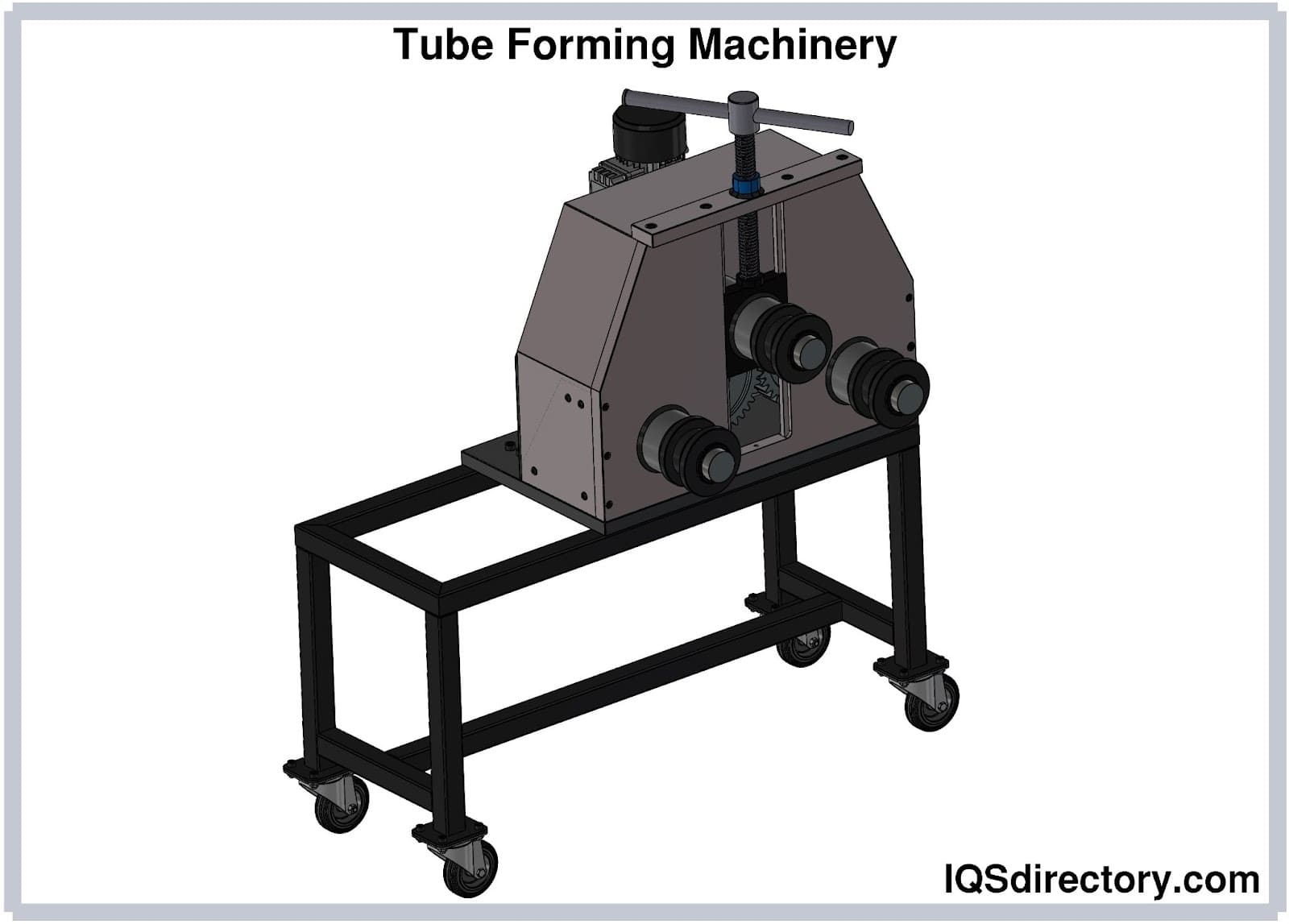
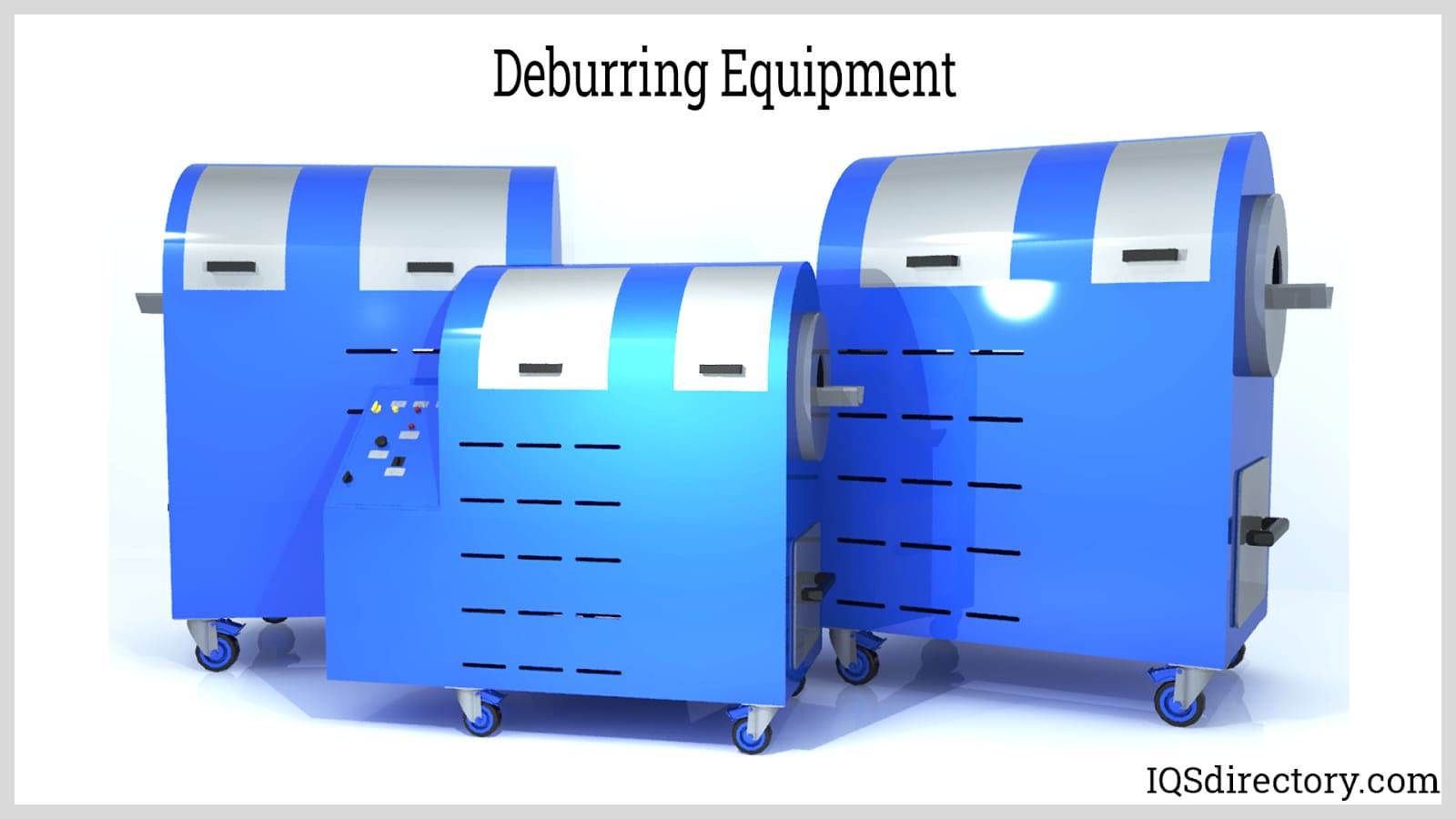
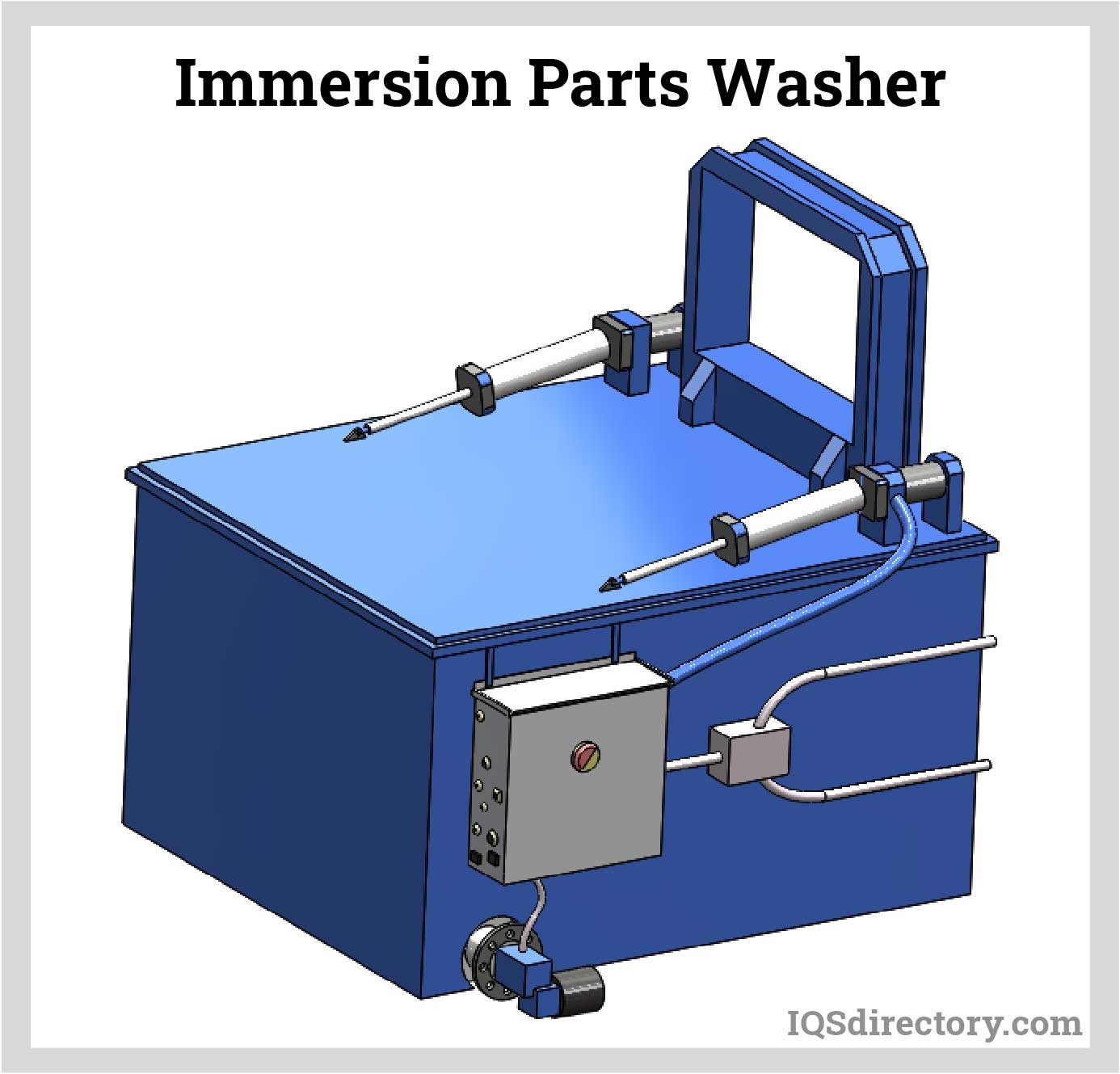
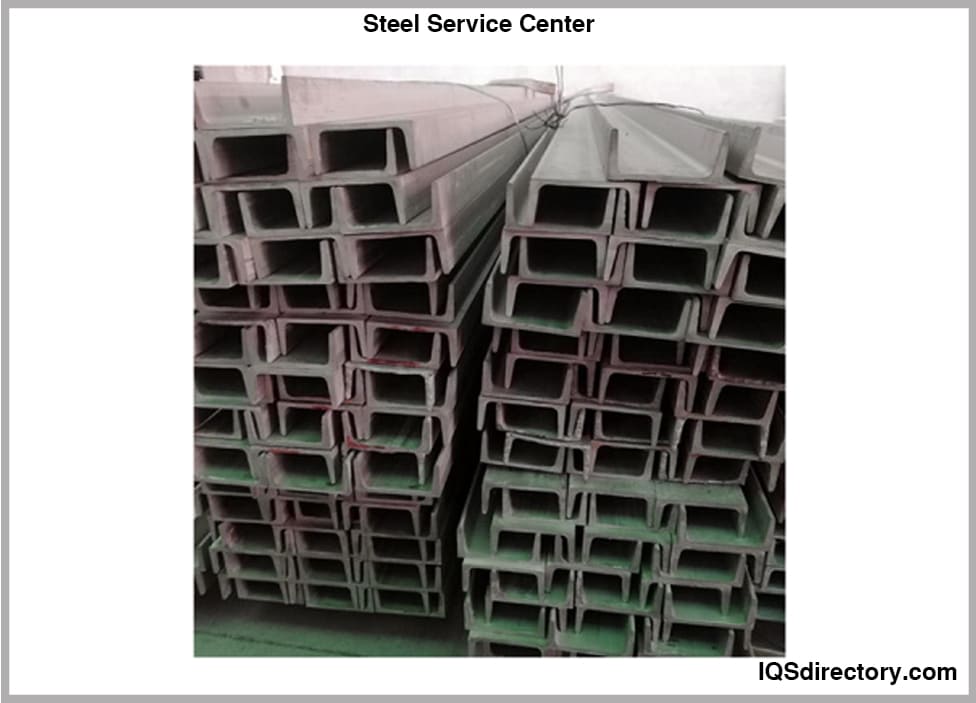


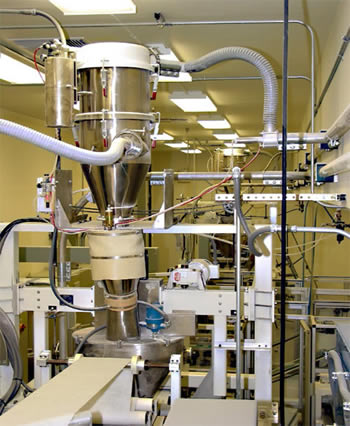 Automation Equipment
Automation Equipment Car Wash Equipment
Car Wash Equipment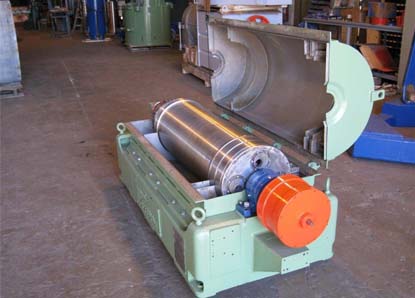 Centrifuges
Centrifuges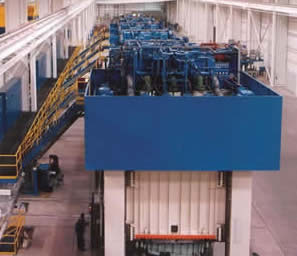 Hydraulic Presses
Hydraulic Presses Lasers
Lasers Machinery Rebuilders
Machinery Rebuilders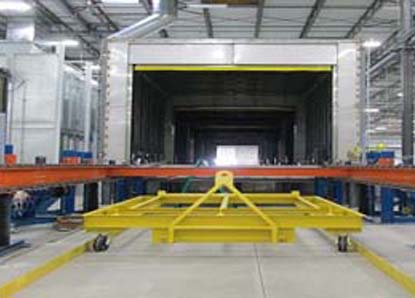 Paint Finishing Equipment
Paint Finishing Equipment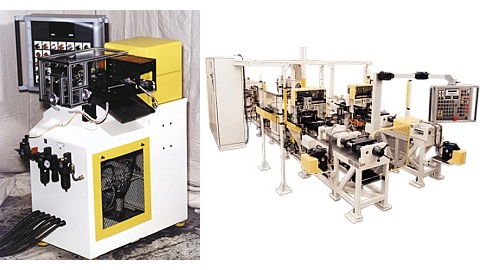 Tube Forming Machines
Tube Forming Machines Castings & Forgings
Castings & Forgings Bulk Material Handling
Bulk Material Handling Electrical & Electronic Components
Electrical & Electronic Components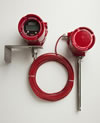 Flow Instrumentation
Flow Instrumentation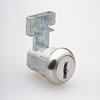 Hardware
Hardware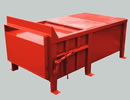 Material Handling Equipment
Material Handling Equipment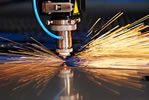 Metal Cutting Services
Metal Cutting Services Metal Forming Services
Metal Forming Services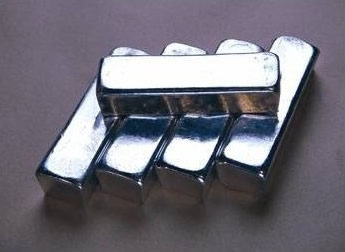 Metal Suppliers
Metal Suppliers Motion Control Products
Motion Control Products Plant & Facility Equipment
Plant & Facility Equipment Plant & Facility Supplies
Plant & Facility Supplies Plastic Molding Processes
Plastic Molding Processes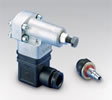 Pumps & Valves
Pumps & Valves Recycling Equipment
Recycling Equipment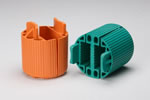 Rubber Products & Services
Rubber Products & Services